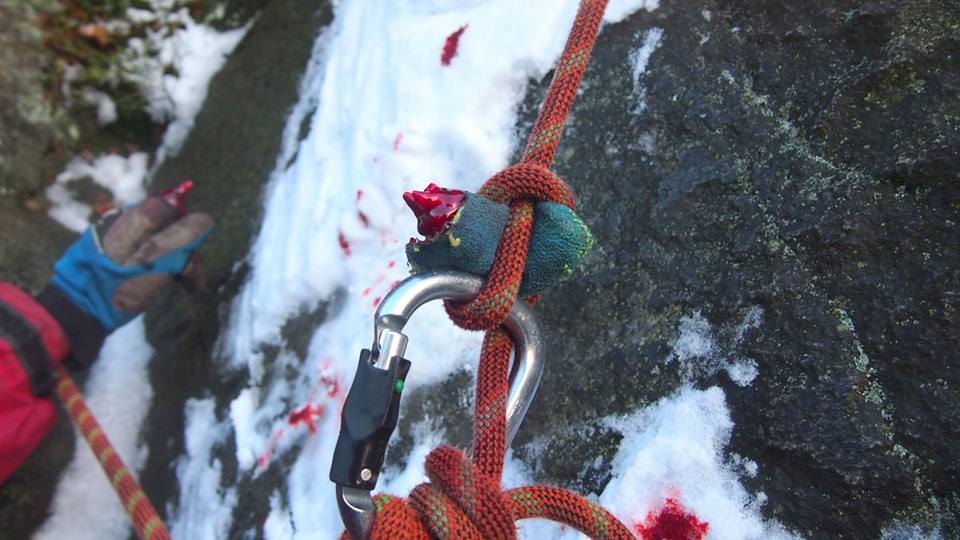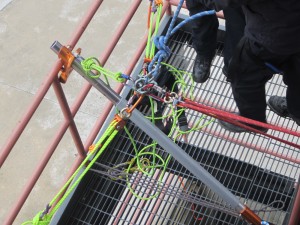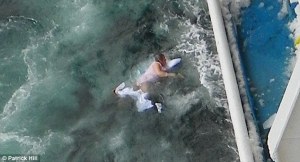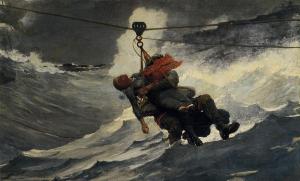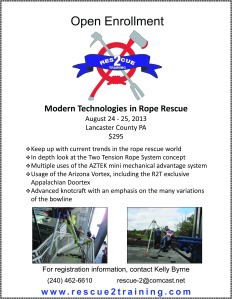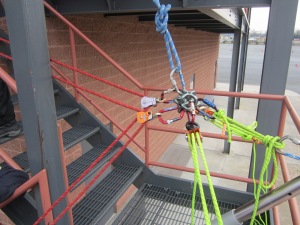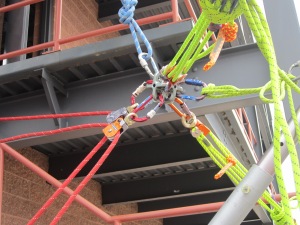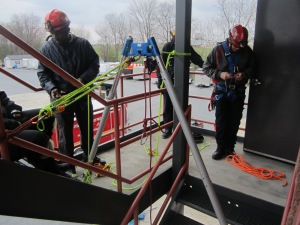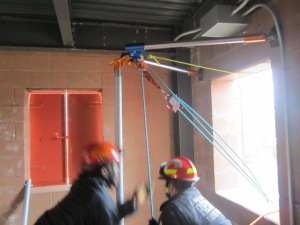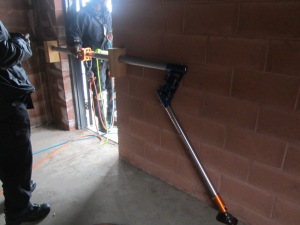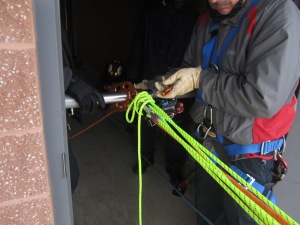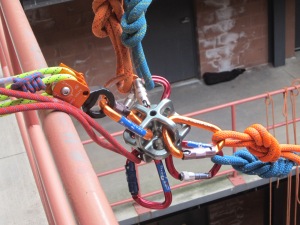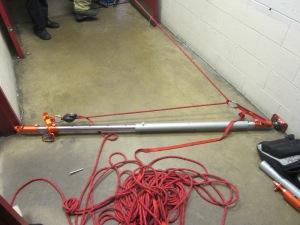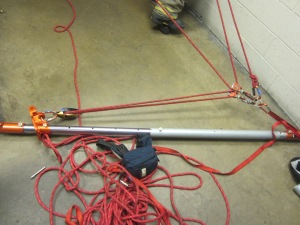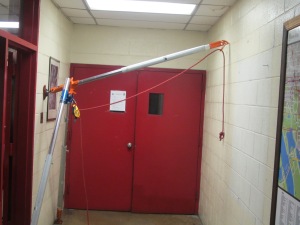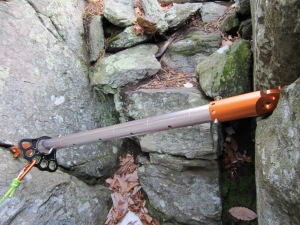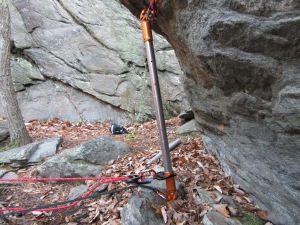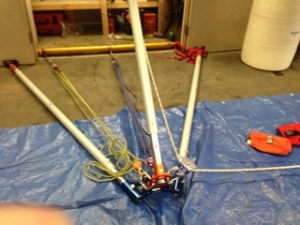Something not quite right about this picture… I just can’t put my finger on it, though.
Seriously though, if you’ve never thought about the forces generated from a rope system, even something as simple as a Munter hitch… this should be all the warning you’ll ever need. I suspect that the climber was falling and got his finger caught in the hitch while it was slack , only to have it still there when the rope tightened again.
Updated:
Eric Ulner from Ropes that Rescue provided this response via Facebook:
“I use Munter and super Munter all the time in tree work for catching branches/logs to lower away from structures. While rigging the Munter, and BEFORE firing up the chainsaw, I will take up as much slack as possible while leaving the Munter in its “jumped” position. That involves pulling that strand coming out of the standing end’s first turn on the carabiner with one hand while the other pulls the opposite direction on the standing end. I developed a habit for doing this a long time ago, where I use a pinch grip on the 2nd strand with my thumb pressing the rope against the side of my curled forefinger (much like a fist). The thought of this very situation crossed my mind when I was tying off a brittle/dead branch…
So, the position of the finger and the palm down position of the hand says to me that this poor chap was trying to keep the Munter jumped while he took up slack while belaying, but with the mistake of wrapping the finger around the 2nd strand.”
I think he correct and in looking closer at the picture, we can see that the carabiner looks like it attached to a belay anchor. The owner of this finger was probably belaying a climber who fell while his finger was in the Munter. Thanks for the insight, Eric!
Thanks to Brian Kazmierzakof Firefighter Close Calls for send this in to us. We’re unable to find the origin of this picture and have no idea of the circumstances surrounding it. If you have any info, we’d love to know the particulars.

